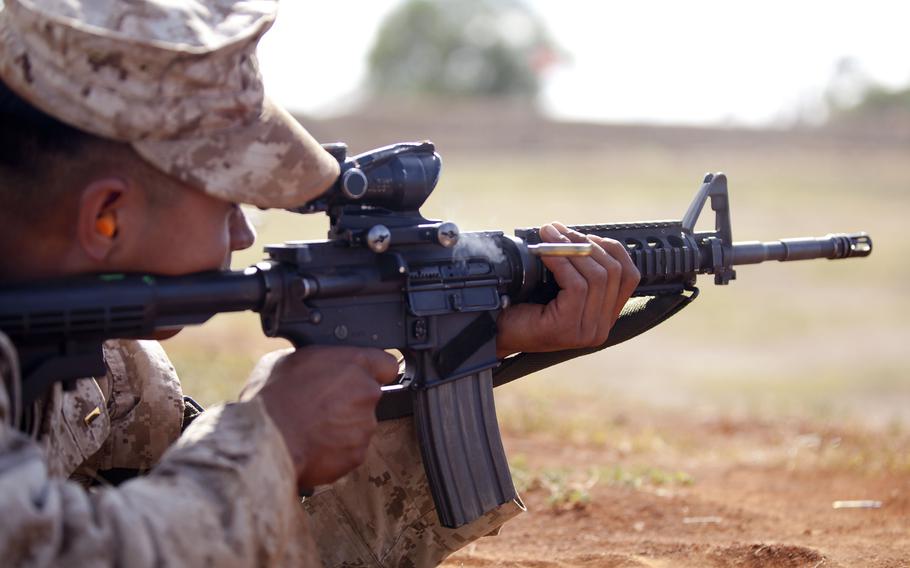
A U.S. Marine takes aim with an M16A4 service rifle at Pu'uloa Rifle Range near Ewa Beach, Hawaii, in September 2013. A government watchdog has asked top U.S. commanders in Afghanistan to explain plans to provide new military equipment, including M16A4 rifles, worth over $630 million to the Afghan security forces, suggesting they may not need it. (Aaron S. Patterson/Courtesy U.S. Marine Corps)
KABUL, Afghanistan — A government watchdog has asked top U.S. commanders in Afghanistan to explain plans to provide new military equipment worth over $630 million to the Afghan security forces, suggesting they may not need it.
In a letter made public Thursday, John F. Sopko, special inspector general for Afghanistan reconstruction, expressed concern that the massive deliveries of new vehicles and rifles could prompt the Afghans to dispose of older, but still usable, equipment in their inventory.
The letter, dated Sept. 11, was addressed to Gen. John Campbell, the top commander of U.S. and coalition forces, and Maj. Gen. Todd Semonite, head of the Combined Security Transition Command in Afghanistan. It listed requests for procurement of High Mobility Multipurpose Wheeled Vehicles and Medium Tactical Vehicles, as well as M16A4 rifles and ammunition.
“I am concerned that we may be buying equipment and vehicles in quantities that exceed the needs of the (security forces),” wrote Sopko, a former federal prosecutor appointed in 2012.
“We’ve received the SIGAR’s letter and are preparing responses to his questions,” said Col. Brian Tribus, a spokesman for U.S. forces in Afghanistan.
SIGAR, which has a staff of about 200, has repeatedly criticized waste, fraud and abuse stemming from U.S.-funded civilian and military projects in Afghanistan.
But U.S. government agencies that have been targets of much of SIGAR’s criticism — such as the Defense and State departments — have complained the reports don’t take into account the physical difficulties of working in a war-torn country with high levels of corruption. They have also said their explanations are frequently ignored.
Sopko asked for a response by Oct. 15.